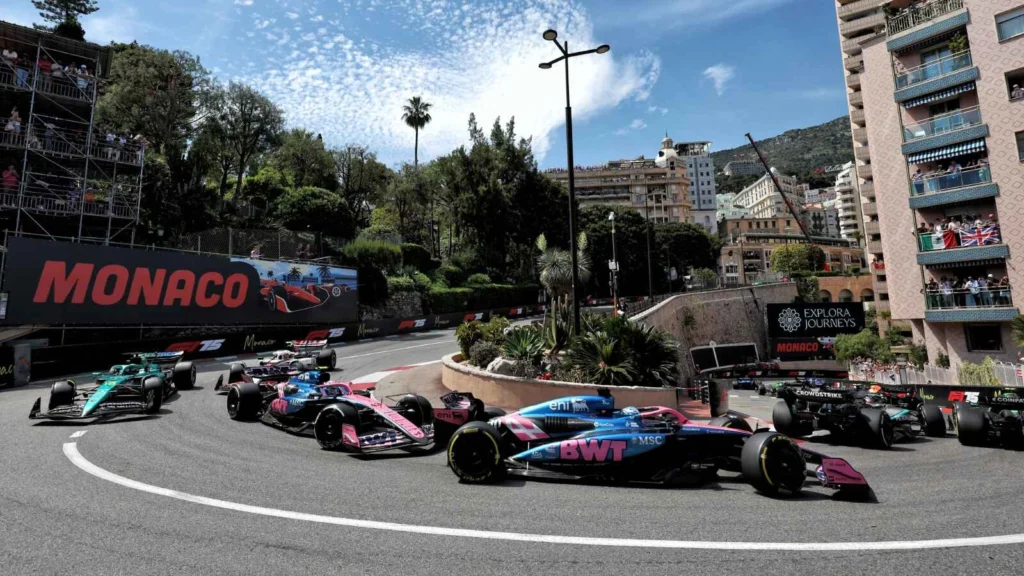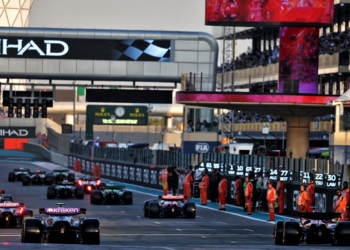Texas Motor Speedway can run smoothly for long stretches, then snap into chaos when a single slide triggers a chain of reactions.
Las Vegas has produced the same kind of weekends, calm one moment and unpredictable the next when traffic tightens and cars stack up. Even Monaco, despite its slow pace, has a way of punishing small errors that ripple through the field and reshuffle expectations.
For bettors in the United States, races like this call for a steadier approach. The room for mistakes is slim and every decision feels a little heavier when the track refuses to behave.
What makes certain races more volatile?
Some races are born wild. Superspeedways like Daytona and Talladega use pack racing, with huge groups of cars running inches apart at very high speeds. One mistake can collect half the field, which is why the sport even has a nickname, “The Big One”, for multi-car crashes that are almost expected in these events.
Street circuits add another layer of drama. Walls are close, run-off is limited, and track evolution can be dramatic over a weekend. Formula 1 data from places like Singapore and Baku shows a consistently high chance of safety cars, which means bunched-up fields, shuffled strategies and a lot of randomness baked into every stint.

In that kind of environment, a no sweat bet becomes interesting. The race might flip on a single restart, or on a pileup that wipes out several favourites at once. A bettor who accepts the chaos and uses a safety net on these specific events is leaning into what the track naturally produces, instead of pretending it behaves like a calm, predictable circuit.
Driver tendencies that increase race unpredictability
The car and the track set the stage, but the drivers decide how crazy the show becomes. Some racers thrive on aggression, late-braking moves and high-risk overtakes. Over a season this creates highlight reels, but it also creates big swings in finishing position, which bettors feel immediately in any head-to-head or podium market.
Rookies and part-timers add another variable. On street circuits and superspeedways, limited experience can mean misjudged drafts, braking points or grip levels. A small error in the midfield can still change the race at the front.
Safety cars and restarts bunch the pack, and the fallout often hits drivers who had nothing to do with the original mistake. You can see it in both Formula 1 and NASCAR, where a small mistake further back can suddenly drag completely different names into trouble.
Even champions have tracks where their form swings wildly. Some are qualifying specialists who fade in race trim, others manage tires brilliantly but struggle in the wet. When a volatile driver, an unforgiving circuit and an unstable weather forecast land on the same Sunday, the betting risk curve spikes hard, and outright markets start to behave like longshot lotteries.
Where a no-downside safety net helps the most
There are races where a small safety net carries a lot of weight. Superspeedways are the obvious example. With pack racing and multi-car wrecks always lurking, even the most logical favourite can be taken out by someone else’s mistake.
The Indianapolis 500 is a good reminder of how quickly an oval can turn. Long green-flag stretches can end in a single multi-car wreck, and late restarts have flipped the running order more than once in recent editions.

On street circuits, value often hides in underdog podiums or top six bets when the track rewards patience and precision instead of pure engine power. Jeddah is a clear example. The narrow, high-speed layout leaves drivers almost no room to reset after a mistake, and safety-car interruptions are common enough to reshape the running order on timing alone. It is the kind of venue where a well-placed outsider pick can suddenly look sharp once the race tightens up.
Responsible ways to navigate volatility without overextending
Volatile races are fun to watch, but they can be tough on the wallet if emotions take over. Responsible gaming campaigns in the United States keep returning to the same simple tools, set a budget, stick to it, and treat betting as entertainment, not as a side income.
Surveys from the American Gaming Association show that most gamblers know these tools and that those who use them report more controlled play.
Concrete habits help. Many motorsport fans limit their action to one or two races per weekend, decide a loss limit before qualifying, and avoid adding bets during safety car periods when emotions run hottest.
NASCAR’s recent focus on Responsible Gaming Education Month, along with similar messaging around series like NHRA, underlines how important these basics are now that betting is increasingly visible around race broadcasts.
The real win comes when the race can be wild, the betting slip can ride the chaos, and the fan still feels calm after the checkered flag. Clear limits, smart use of promotions and a good understanding of where volatility comes from make that balance much easier to keep.







